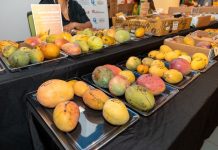
Island agriculture presents unique challenges due to the proximity to saltwater, limited land availability, and often diverse microclimates. To maximize crop yields and ensure sustainable farming, understanding the health and composition of the land’s soil is essential. Soil sampling methods tailored to island conditions can provide valuable insights, helping farmers make informed decisions about planting, fertilization, and land management. Here’s a closer look at a few soil sampling techniques for island agriculture.
Grid Sampling for Accurate Analysis
Grid sampling divides a field into equal sections, allowing for systematic collection of soil samples. This method is particularly useful on islands where the soil can vary greatly within short distances. By sampling each grid, farmers can identify areas with specific nutrient deficiencies or pH imbalances. This detailed analysis helps optimize fertilizer application and crop placement, ensuring efficient use of resources. Grid sampling is a valuable tool for precision agriculture, even on smaller plots of land.
Random Sampling for General Assessment
Random sampling is a quick and cost-effective way to assess overall soil quality. This method involves collecting samples from random locations across the field, making sure they represent the area as a whole. For island agriculture, where fields may be smaller or fragmented, random sampling provides a broad overview of soil conditions. While less detailed than grid sampling, it still offers insights into pH levels, organic matter, and nutrient availability, guiding basic agricultural decisions.
Zone Sampling for Targeted Insights
Zone sampling focuses on specific areas within a field that share similar characteristics, such as elevation, soil type, or crop history. This method is ideal for islands with diverse topography or microclimates. By grouping zones and sampling within them, farmers can address localized issues like erosion-prone areas or saline soils. Zone sampling allows for tailored interventions, improving efficiency and sustainability. It’s an excellent choice for managing the unique challenges of island environments.
The Critical Role of Soil Sampling in Island Agriculture
Soil sampling is the foundation of sustainable farming, especially in island contexts where resources are often limited. By understanding the critical role of soil sampling, farmers can make data-driven decisions that enhance productivity while protecting the environment. Sampling methods such as grid, random, and zone approaches provide essential information on soil health, helping to optimize inputs and maximize yields. For island agriculture, soil sampling is not just a practice—it’s a key strategy for long-term success.
Now that you know the soil sampling methods for island agriculture, you can better manage your land and improve its productivity. By adopting these techniques, you can ensure your agricultural practices are both efficient and environmentally responsible.





























